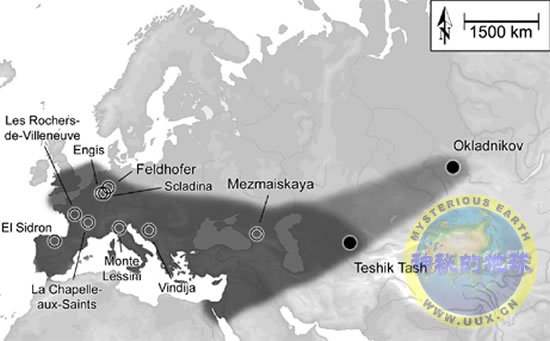尼安德特人活动范围向东延伸数千公里

Neandertals Ranged Much Farther East Than Thought
Neandertals made it all the way to Siberia, some 1,200 miles (2,000 kilometers) farther east than previously thought, new DNA evidence suggests.
Scientists have long known that Europe was a stomping ground for the Neandertals (often spelled Neanderthals), with the human cousins spreading throughout the Mediterranean between around 200,000 and 30,000 years ago.
Until now, though, experts had believed present-day Uzbekistan in Central Asia to be the easternmost extent of the Neandertal range (see a map of the region). Beyond this point the evidence becomes sparse.
"Our findings show that Neandertals were more widespread and thus even more successful than previously thought," said Svante Pääbo, a geneticist at the Max-Planck Institute of Evolutionary Anthropology in Leipzig, Germany, who carried out the DNA analysis.
The analysis appears online this week in the journal Nature.
Teeth, Bones, and Tools
Tantalizing finds of Neandertal-style stone tools in Asia, along with fragments of hominid bones and teeth, had hinted that the species had expanded deeper into the continent, experts say.
But scientists have never been able to verify the theory from such small pieces of bone.
Using a relatively new DNA technique, however, Pääbo and his colleagues were able to glean information from the minute fragments.
The scientists analyzed the Asian remains' mitochondrial DNA, or mtDNA—genetic material from the cell's powerhouses that is passed from mother to child—and compared it to mtDNA from Neandertal fossils found across Europe.
Fragments found in a cave in the Altai region of southern Siberia matched the European data, indicating that the Siberian bone fragments belonged to Neandertals rather than modern humans.
In addition, Pääbo and his colleagues were able to confirm that a partial skeleton of a child found in Uzbekistan's Teshik-Tash cave was also a Neandertal.












